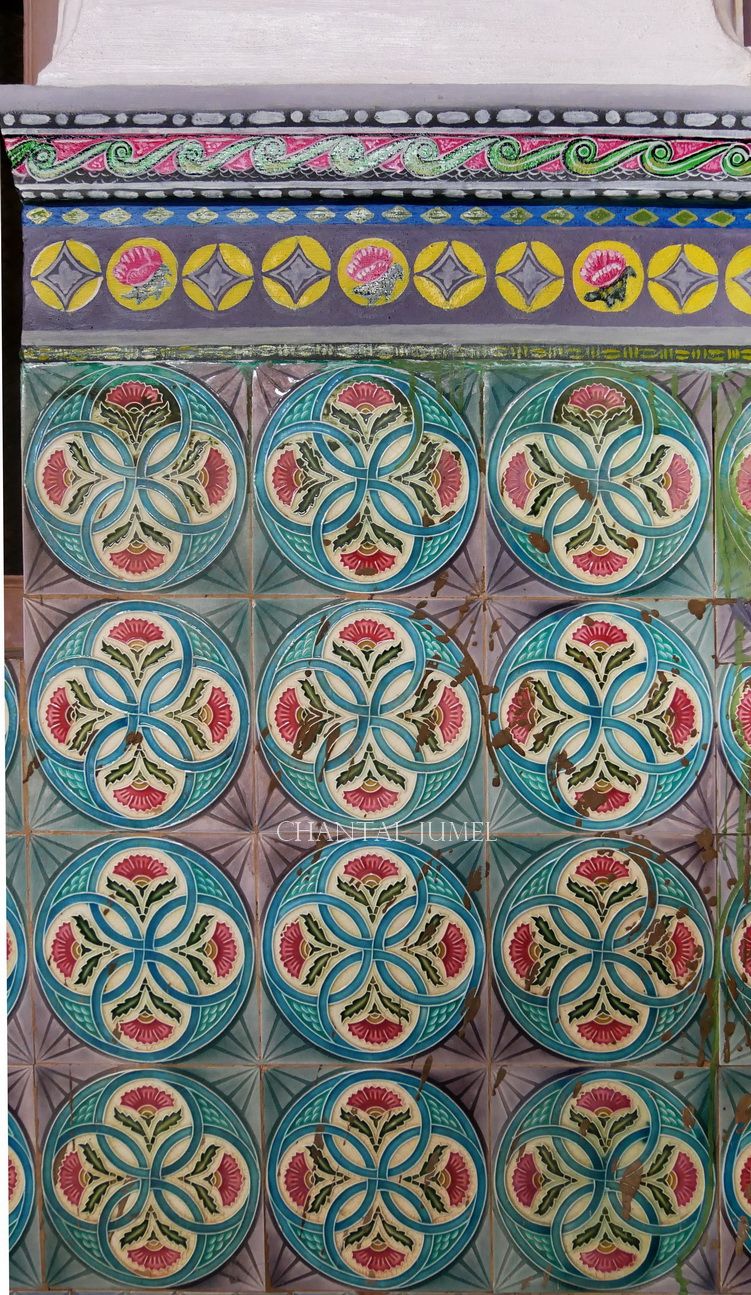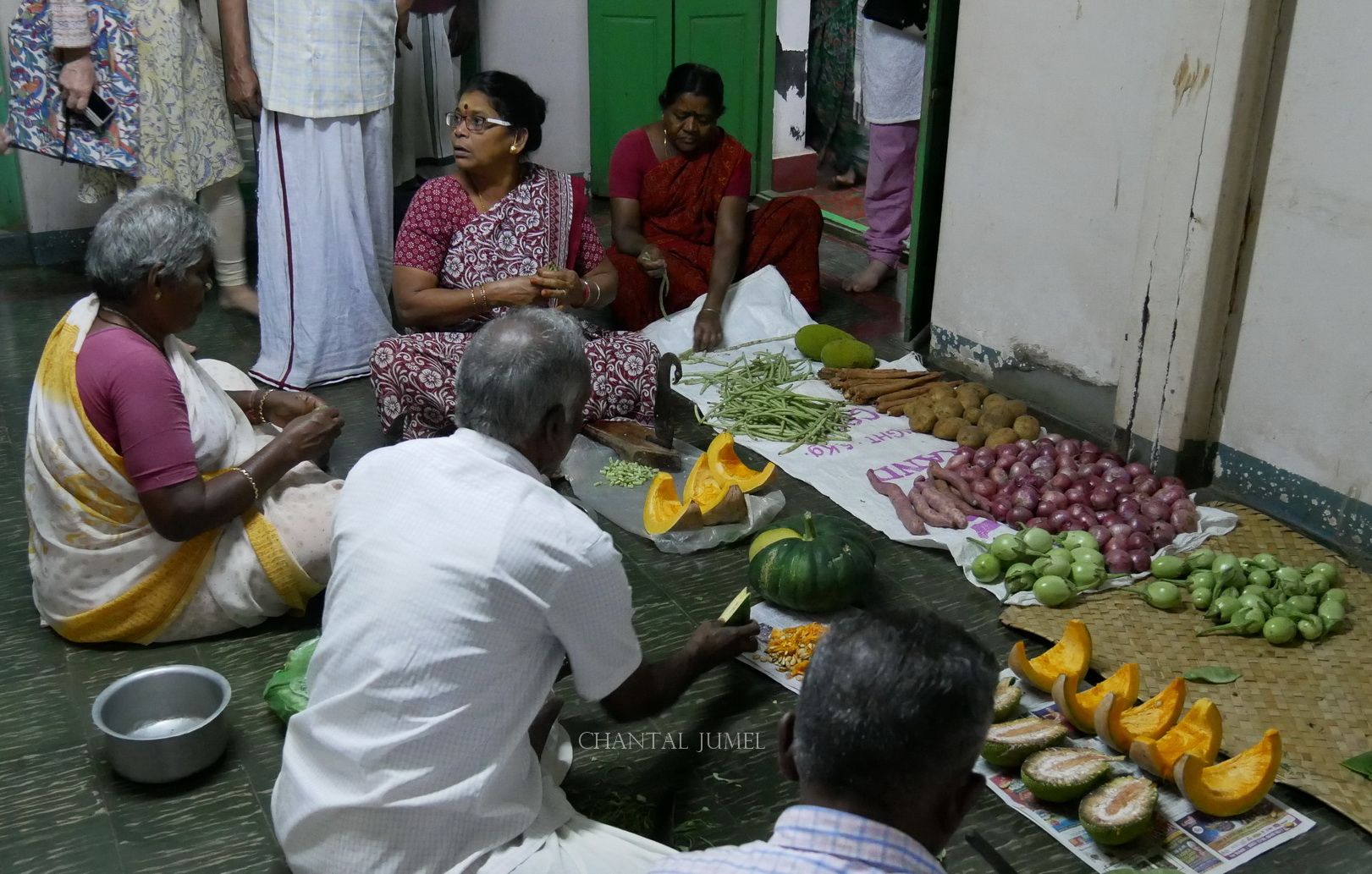Pongal festival, the Chettiar way — part 3
Finally, it is Pongal, and I can't wait to see the preparations in the house. The women unleash their creativity by adorning the earthen and bronze vessels. The kolam stands out once the rice paste has dried, and is ready to welcome the celebration with an auspicious Ganesha portrait.

The day before Pongal, the palatial mansion of Mrs Meenakshi Meyyappan and the Bangala hotel that she owns, and runs are thoroughly cleaned. She is the head of the family and staff, and being the matriarch, she oversees family or festival gatherings. Years of managing elaborate banquet feasts and hosting guests have transformed the hotel into an international spot of culinary pilgrimage. With a deep sense of her Chettiar heritage, her open mindedness, and a keen sense of business, “Aachi” has managed to draw attention to Karaikudi, a small town in the interior of Tamil-Nadu.
Sometime earlier, I had written to Mrs Meyyappan expressing my desire to document a Chettiar Pongal and its distinctive kolam. Chettiar homes are unlike any other in South-India; so is the Pongal celebration. Luckily, I was invited to come and participate in the event. I arrived a few days before the festival and decided to play the tourist. I drove across the peaceful countryside roads to visit colourful village shrines with rows of smiling, painted clay horses, and statues of Ayyanar, the guardian deity of the villages, riding on either an elephant or horse. Many shrines are located in sacred groves at the boundaries of rural villages. The naïve yet impressive statues of local deities are quite a contrast to the grand, sophisticated, and perfectly aligned Chettiar mansions.

Sacred groves
Namam Samudran is a forest sanctuary, cared for by the villagers and the potter community. As I walked in, smiling horses, elephants, and cows, aligned on both sides of a dusty path led to painted elephants holding lotuses, and then to a shrine. On the way, many animals are headless or have their bodies cracked. Heavy rains and drought are the main causes for their deterioration, and in 2011, the cyclone Thane beheaded many statues and uprooted trees, crushing whole lines of horses. Reaching the shrine, coloured votive clay dolls were either lined up or stacked on top of each other. The latter are prayer requests, or acknowledgements of fulfilled prayers for the birth of a child, the recovery of an ill child, and other reasons.



Sri Solai Andavar temple is another shrine dedicated to Ayyanar with rows of happy looking horses. Lately in the wake of globalisation, the hereditary pottery tradition in Ayyanar temples has gone under threat as the younger generations are moving to cities.

I left behind me the colourful sacred groves where hundreds of horses are waiting for Ayyanar and his faithful companions to ride them at nightfall and defeat the evil forces threatening the village. As soon as I got back in the car and drove away, the grove absorbed again the gigantic statues and horses in the same way that Sleeping Beauty's castle had fallen into a deep sleep, until the next visit of devotees.

The unique Athangudi tiles
The next day, the road led me to the village of Athangudi known for the extraordinary variety of its tiles called “Chettinad tiles” or “Athangudi tiles”. After visiting several wealthy Chettiar mansions, I noticed the wide range of vibrant tiles that adorn the floors and the walls. The story goes that when these properties were built, tiles were imported from Italy, Portugal, and France. Over the years, it became difficult to replace those that were damaged or worn out, so the artisans of Athangudi set up a small-scale industry to make replicas of the imported tiles, and later invented new geometric and flower patterns.



Painting the Pongal vessels
Finally, it was Pongal, and I couldn’t wait to see the preparations in the house as well as in the hotel. In the kitchen, the vegetables sorted by type were neatly arranged on a mat to be cooked in all possible styles, and the rice paste awaited some skilled hands to beautify the courtyards and the pots. The women of the house unleashed their creativity by adorning tiles, and all the earthen and bronze vessels with circles, triangles, wavy lines, and rhythmic patterns as if the benevolent nature of rice paste had the intrinsic power to induce more prosperity once applied.



Drawing the kolam and decorating the courtyards
As soon as the vessels were painted, they outlined an imaginary mansion with beams and roofs in the middle of the extensive inner courtyard. Here is a square framed by another square punctuated by lines of dots and eight rectangles at each corner. These geometric shapes, assertive lines, and dots drawn with the fingertips are not only symbolic illustrations of the imposing mansions built each time the Chettiar men returned from a trip to display their success, but they also narrate the inherent values of the clan and even of the entire community, which can be summed up as family gatherings, clan reunions, builder spirit and entrepreneurship. The ghostly kolam stands out once the rice paste has dried, and is facing a sketching of Ganesha, the god of auspicious beginnings.

In the centre of the kolam, two smaller squares had been marked out to welcome the earthen vessels in which the tradition is to cook the ven pongal (rice cooked with clarified butter and spices) and sakkarai pongal (rice cooked with jaggery) in milk.






"Pongalo Pongal"
Each and everyone standing around the decorated clay pots waited with great excitement for the milk to overflow. The foam steadily rose to form a collar until the creamy layer escaped and spilled down the vessel to the joyful cheering 'Pongalo Pongal' of the family and guests to mark the auspicious occasion. The word Pongal connotes overflowing with the rise of wealth and good fortune to celebrate nature’s bounty and show her gratitude. What comes next is an unforgettable banana leaf meal delighting the taste buds and served with unparalleled generosity that honours the reputation of the house and its hostess.

Previous articles:
